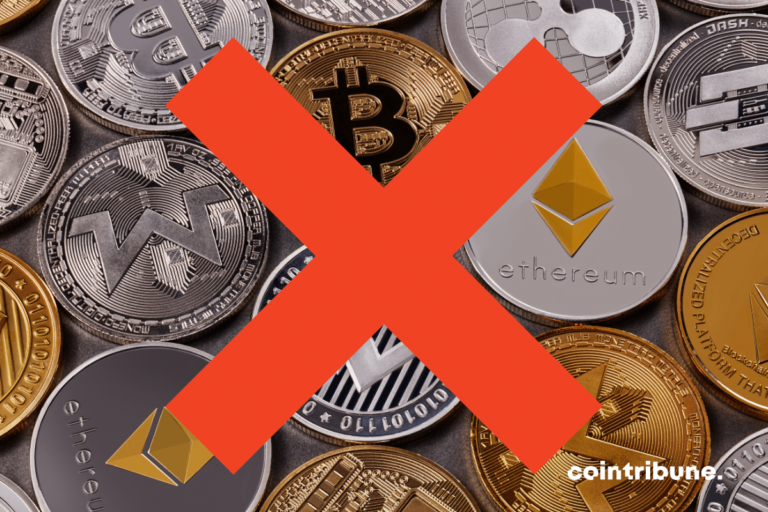
It may be preferable to slow down the rate of its ASICs and extend their lifespan. But how to do it ?
The main sources of wear
The lifetime of an ASIC greatly depends on the conditions of use. A poorly maintained ASIC, subject to strong temperature fluctuations or unbridled (overclocking), can see its lifespan greatly reduced.
Here are the typical issues that plague miners that are meant to last between 3 and 5 years (or even longer):
- Poor ventilation / air filtration / cooling
- Humidity
- Extreme temperature fluctuations
- Monitoring and irregular maintenance
Reminder to all miners: where you store your gear is crucial to its longevity. »
The first S9 Antminers shipped in 2016 proved to be very durable machines. Some are still spinning! The failure rate has proven to be low, even after years of wear and tear in harsh conditions such as dusty oilfields or freezing Siberia.
According to feedback from French miner Sebastien Gouspillou (BigBlock, BBGS), an S9 can last more than six years:
“Most of our S9s were bought second-hand, after shooting haphazardly in China (without filtering the air). We still have half of it running six years later [en remplaçant régulièrement les puces qui rendent l’âme]. On the other hand, the S17 is a disaster. »
Nothing is forever and miners who use old models would be well advised to take precautions to hold out until the next halving. Or the next winter for those who use it for heating.
One of the most important tools is ASIC management software (Braiins OS+ or ASIC.TO). These software are generally used for: overclocking. That is, chop faster than at factory settings.
Our article on overclocking: How to unleash your Antminers?
But while overclocking maximizes hashrate, it also decreases ASIC lifespan. Whereas, on the contrary, slowing down the rate makes it possible to extend their lifespan.
This can be extremely useful for Antminer S9 owners who want to maximize their profitability per watt of power consumed while increasing ASIC lifespan.
What factors influence the lifespan of ASICs?
First, there is the deleterious effect of temperature fluctuations. For fan-cooled machines, rapid changes in ambient temperature cause all parts to expand and contract. Moreover, at different rates depending on the materials.
For example, silicon chips do not react to temperature changes the same way as the copper conductors to which they are connected. The greater and more frequent the magnitude of the expansion, the more the material will wear (micro-disconnections, corrosion by oxidation, breakage of components, etc.).
In addition to these temperature fluctuations, the vibrations caused by the fans also contribute to general wear. The warmer the surrounding air, the faster the fans will have to spin, resulting in stronger vibrations. Especially if the ASICs are in overclocking mode.
How to extend the life of miners?
One of the best solutions to both problems cited is immersion cooling. We talked about it in this article: The future of mining.
The dielectric coolant used in immersion systems has a much higher thermal density than air. The insulation of the miners against sudden temperature fluctuations between day and night is much better.
Also, immersion cooling means fans are no longer required. The vibrations completely disappear.
The problem with immersion is its cost. Dielectric liquids are expensive. No need to dump old Antminers like the S9 or the S17 which are already no longer profitable with a price per kWh above 4 cents and 7 cents respectively.
What if immersion is not an option?
Temperature fluctuations and vibrations are the main factors that degrade the service life of ASICs. Reducing these two factors is therefore the key to their longevity. And without immersion, there are not 36 solutions. ASICs need to be slowed down.
For example, an Antminer S9 with Braiins OS+ software can vary the power consumption between 400 watts and 1800 watts. It is therefore possible to chop at higher frequencies (overclocking) than the factory settings, but also at lower frequencies.
A lower chopping frequency means that electrons flow less quickly in ASICs which heat up less. The direct consequence is a slowing down of the fans, which reduces vibrations (and also saves some electricity).
On the other hand, lower temperatures in ASICs are likely to be closer to room temperature. A smaller difference between these temperatures decreases the magnitude of the temperature fluctuations.
Efficiency gain
Finally, as we said above, slowing down the hash rate increases the efficiency of the machines. More hashes are obtained for the same number of watts injected into the ASICs.
On the brains blog (on which this article is based), a slowdown test of an Antminer S9 gives an efficiency of 76 W/TH/s. This efficiency is obtained by injecting only 1000 watts, for a hash of 13.09 TH/s.
Compare to factory settings which generate 13.5 TH/s, but pump out 160 watts more (86 W/TH/s efficiency).
All in all, lowering the hashing frequency with Braiins OS+ helps to gain efficiency. The S9 consumes 160 watts less (-14%), but produces almost the same number of hashes (-3%). Profitability per watt increases.
Note in passing that this gain does not really come from the electricity savings of the fans (between 5% and 10%). The energy saving is rather due to the fact that the current resistance of a material decreases when the temperature decreases. So that at equal frequency/voltage, the intensity of the necessary current will be less. Energy consumption will be further reduced.
Finally, let’s say that if you have low margins (old Antminer model), or just want to minimize your operating costs, it is better to slow down your ASICs, in the short and long term.
Receive a digest of news in the world of cryptocurrencies by subscribing to our new service of daily and weekly so you don’t miss any of the essential Tremplin.io!






